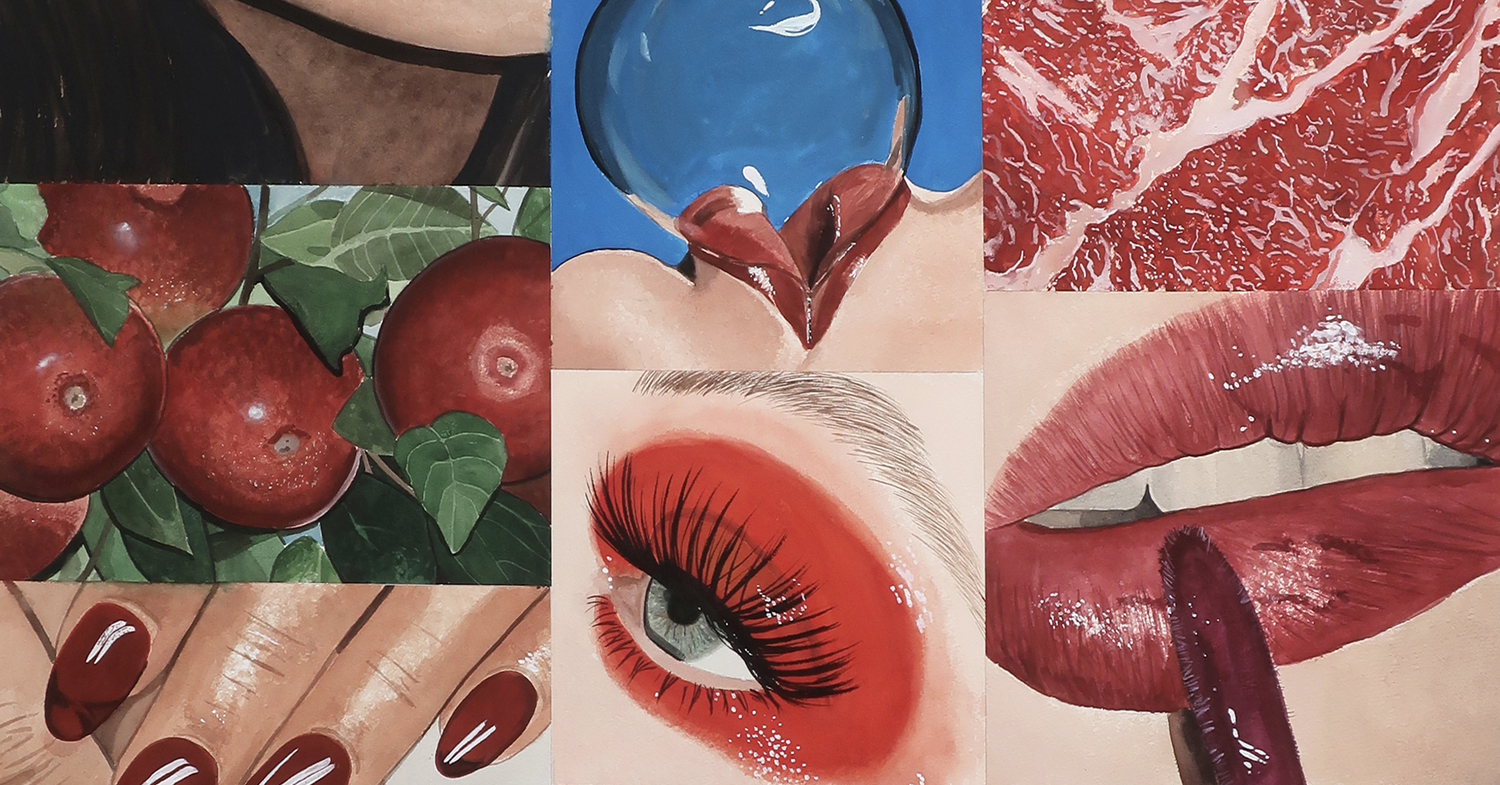
Pat Andrea keeps the line

About the “Cut & Clash” exhibition to be seen at the Strouk art gallery, in Paris, until April 20.
Pat Andrea, born in 1942 in The Hague, Netherlands, is a Belgian contemporary artist whose work is captivating, certainly, since it blithely crosses the boundaries of realism and fantasy... but which leaves me no less perplexed . His singular work is distinguished by his technical mastery, his unbridled imagination and his ability to captivate the viewer with very rich compositions which always start from the line, from the contour. Certainly too. But the hyper sexualization of his painted women, who more often remind me of menacing inflatable dolls than anything else, testifies in my opinion... to the fact that Pat Andrea is clearly the artist of a bygone era. Afterwards, for sure, vintage can also appeal to the contemporary art market. In any case, and this is not likely to surprise me, Pat Andrea pleases Catherine Millet, editorial director of Artpress, herself belonging to this generation, whose bustling sex life made a best seller ago twenty years, and who finds today's feminists very surly when they take offense at a few tactile “flirtations”. Brief. It was not the signatory of the Le Monde anti “denounce your pork” column in 2018 who risked being disturbed by the representation of women in Pat Andrea’s work. In the interview with the painter conducted by the art critic for the April contemporary art magazine, we are therefore of course yours and yours, comfortably among ourselves, and the gentleman's ego is flattered as well as it's necessary.
“At a time when the drawing fairs are opening in Paris, was it not opportune to meet a painter, a virtuoso draftsman, who does not, however, renounce a modeling of the flesh worthy of Courbet? » art criticism immediately poses. Excuse me a little. “Especially since several of his paintings appear among reference works in the Cut & Clash exhibition at the Strouk gallery, in Paris (until April 20, Amélie Adamo curator), a meeting of several generations around the methods of the fragment and telescoping. And when it comes to shock and melee, Pat Andrea knows it. " OK.

In 1948, the man who would become one of the representatives of the New Subjectivity received his first drawing prize. He is six years old, the son of the illustrator Metti Naezer and the painter Kee Andrea. In 1954, while studying in The Hague, he dreamed of becoming a doctor. A visit to the Royal Academy of Fine Arts, where his parents met, determined his choice to ultimately study art. In 1960, Pat Andrea enrolled at the Academy of Fine Arts in The Hague where he met the man he considered his master, the painter Westerik, and a few friends with whom he founded in the 1970s the ABN group, such as Walter Nobbe and Peter Blokhuis. With the Academy of Fine Arts in The Hague, he traveled to Spain for the first time. He will return there very quickly to visit the Prado Museum in Madrid, thus discovering to better immerse himself in the masters of the 20th century, and also those of previous periods: Balthus, Pierre Bonnard, Piero de la Francesca, Masaccio, Vermeer, Grünewald or Bosch.
In 1967, Pat Andrea received the Jacob Maris drawing prize. And this time he is 25 years old. He exhibited several times in Holland: in Amsterdam, Arnheim, The Hague and outside his country, in Zurich. The following year he exhibited at the Gemeente museum in The Hague and met the art critic Pierre Sterckx who introduced his work to Belgium. But the crucial year for Pat Andrea was 1976, the year in which he mounted his first exhibition in Paris in the Jean Briance art gallery, at the invitation of the critic Jean Clair. This exhibition subsequently gave him the opportunity to travel to South America and visit Peru, Bolivia and Argentina. Jean Clair chose him again to participate in the second exhibition he organized... and which gave birth to one of the artistic movements of the second half of the 20th century: The New Subjectivity. Pat Andrea therefore finds himself alongside international artists such as Ronald B. Kitaj, David Hockney, Jim Dine, Sam Szafran, Antonio Lopez, Isabel Quintanilla... All share the same alternative figurative vision of contemporary reality, without any theoretical pretension or ideological positioning, carried simply by a desire to paint well, to restore the role of the painter as well as his techniques.
To the artist who finds it “enjoyable” to be able to paint pictures in immense formats, Catherine Millet points out that she sometimes paints on the walls. “Going back to my origins makes me happy. I have gotten into the habit, when I am invited to a museum or other large exhibition space, of asking: don’t you have a wall where I could paint? I add that we can then repaint over it without problem. » Nice proof of humility, on the part of this painter invited all over the world. But it must be said that collectors are snapping him up, and given the popularity his works have achieved on the art market, it has surely been a long time since he no longer has to worry about to leave all his works of art to posterity.
I also found it amusing to learn in this interview that Pat Andrea's famous "head-legs" were born at the time when he started cutting out his drawings when he didn't think they were successful. “I kept pieces and ended up with a box full of heads and legs. When the head seems too big, it’s because it doesn’t come from the same drawing as the legs,” he confides to Catherine Millet, who also points out to him that the faces he paints often have looks very intense. “Yes, they are eyes that look and the public realizes it. I still started in a period where realism, that of the 1950s, that which my father practiced, was a stereotypical realism which imposed simplifications. Whereas for me, I wanted my character to look, to become an individual who shows his emotions, which at the time was considered anecdotal illustration. It was forbidden. But look at what is happening at the moment: there is once again an interest in this form of realism that we thought had disappeared. »
Yes, ladies and gentlemen, life is apparently an eternal beginning, a succession of cycles. So art too...
 Article written by Valibri in Roulotte
Article written by Valibri in Roulotte
Illustration: Pat Andrea - Galerie Strouk





































































